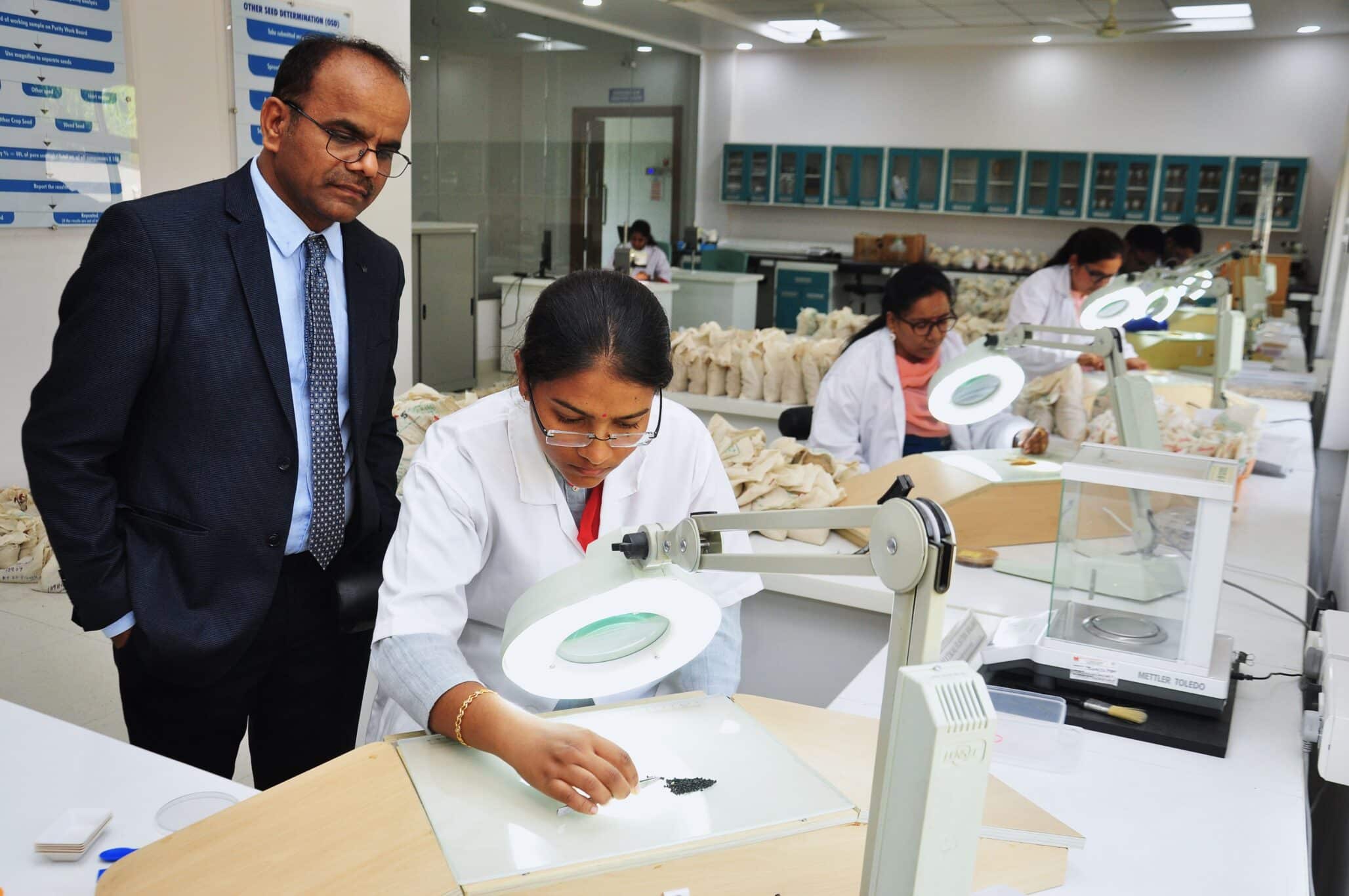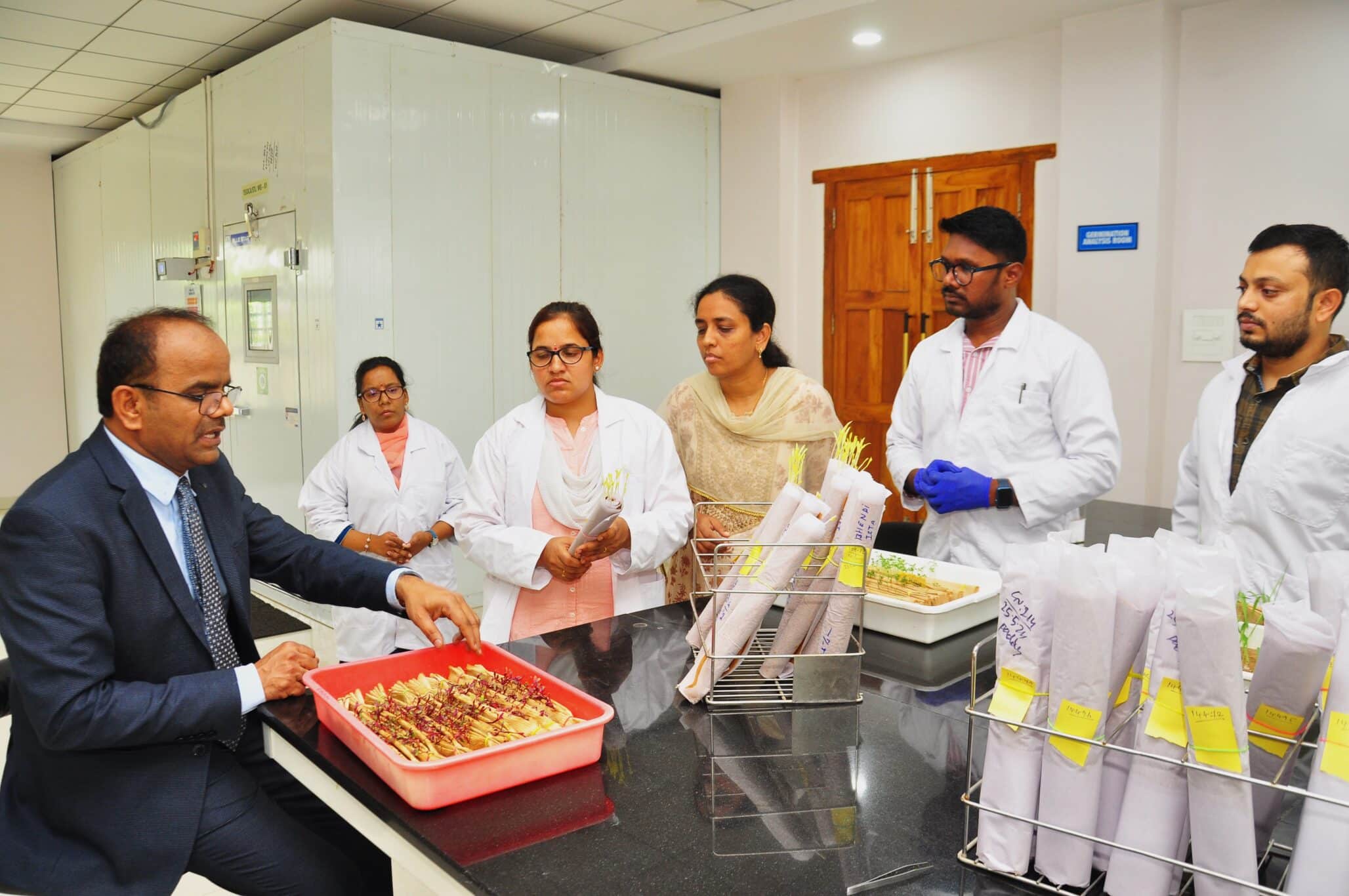When it comes to seed quality, customers want to know exactly what they are buying and what they can expect.
High quality seed is determined by its parent’s genetic makeup, physical integrity and purity of the seed, seed health and physiological seed quality, explains Lahcen Grass, the global manager for seed biology testing and product marketing support at the Syngenta Seedcare Institute.
Alison Powell, a long-time member of the International Seed Testing Association (ISTA) and an honorary senior lecturer at the University of Aberdeen, says it’s important to define what we mean by “seed quality.”
The term is wide ranging, she says, and encompasses purity, variety, problems of seed health, germination and vigor. She says it also includes whether or not the seed is genetically modified and factors such as moisture content and seed weight.
“We hear a great deal about plant breeding, but the product of plant breeding is only as good as the quality of seed produced,” Powell says, noting much of that depends on seed production conditions.
Grass agrees. “The quality of a given year’s seed is determined by the prevailing weather and field conditions from the previous year, and subsequent processing and handling practices,” he says, adding that you also have to consider if it was harvested at its highest point of physiological maturity.
The latter property can be determined by two separate tests: a germination test and a vigor test. However, these tests are not created equal.
For seed to be sold in the United States, the percent germination must be printed on the each bag of seed. This value is derived from a standard germination test conducted under optimum temperature, moisture and light conditions. But, Grass says it’s important to recognize that some of these seed lots might not be capable of germinating or emerging under less than optimal field conditions.
This places more importance on the vigor test. While each seed company has its own proprietary method for conducting vigor tests, Powell points out that standardized vigor tests are published in the ISTA Rules for Seed Testing and are used worldwide. Vigor tests often impose stressful conditions on the seed during germination and emergence. The ISTA tests include several different tests but are all based on the main cause of differences in vigor, namely seed aging.
“High germination seed lots from the same variety and year can yield good germination test results but score very different on vigor tests,” Grass says. “Generally, seed susceptibility to stresses that lead to poor and uneven field emergence are typical features of seed with lower vigor, not of lower germination capacity.
“On the other hand, higher and uniform emergence and vigorous seedling growth are properties of seed with higher vigor and germination.”
Seed vigor is unlike germination in that it’s not an absolute number. The expression of vigor depends on field conditions and is affected by oxygen uptake, water uptake and soil temperature. Thus all seeds will emerge well in favorable conditions and differences in emergence due to vigor only arise in poor conditions.
“Industry shouldn’t rely solely on germination tests, because it doesn’t give the complete story,” Grass says. “The good thing is all seed companies go the extra mile to conduct their own vigor tests. They invest their own resources because they don’t want to sell low vigor seed to customers.”
Sarah Foster, president of 20/20 Seed Labs in Canada, agrees.
“We have our sights set on seed quality and how the environment could influence vigor,” she says. “With hybrid wheat on the horizon, quality, performance and vigor are key competing factors. As scientists we have to work on new tests to determine what’s needed in the near future.”
Grass says this information can then be used to rank seed lots based on germination. For example, if the germination rate is low, there’s no need to test it for vigor.
With a focus on vigor, Powell and the ISTA Vigor Committee constantly think about the development of new tests and the potential for automation, which can dramatically speed the test results. For example, Powell says the radicle emergence test depends on the physical counting of emerged radicles, but the use of image analysis can drastically speed the process.
Just as scientific advancements are made in plant breeding, so too are they in the seed testing sector. But are the rules and standards set forth keeping up with these new breakthroughs?
In 2009, Joost Van der Burg, a member of ISTA’s Advanced Technologies Committee representing the Netherlands at the time, inventoried the most promising technologies that were either in the pipeline or had emerged and were available for use. The technologies, he says, usually involve some investment and they sometimes take a decade or more to mature, so it’s understandable that some secrecy surrounds them.
Powell acknowledges there are new technologies, developed by equipment companies, which are beginning to come into the market. The challenge, she says, with many of the tempting new technologies is that they’ve only been tested using select material, not commercial material.
Powell explains that ISTA’s Seed Science and Advisory Group can evaluate the efficacy of equipment that is marketed as a means of testing seed.
“We get as much information as possible from the company and published research, and then evaluate the evidence that the equipment is effective and publish the results,” she says. “The results of the seed tests need to be comparable everywhere because that is the basis of international trade.”
However, having worked with students from Nepal, Bangladesh and Kenya, Powell says she’s particularly aware that not all countries have modern laboratories and equipment. “That’s why it’s necessary for the association to recognize a wide range of tests,” she points out.
Tested and Trusted
“Our vision within the International Seed Testing Association is ‘uniformity in seed testing,’” Powell says. “We’ve worked hard to get the rules and testing standards we have today in place.
“The tests that exist now are the ones that have been and can be replicated around the world in any laboratory, and that give people in the seed industry a great deal of confidence. They are also the basis for international trade.”
In some cases, the different types of tests to evaluate one characteristic of seeds reflect the changes in approach to testing. “When I think about a variety test, there are many different types of tests that can be used to verify the variety,” Powell says. “These range from traditional methods that evaluate if features of the seed are ‘characteristic of the variety’ to extraction of proteins or DNA techniques, followed by electrophoresis or PCR [polymerase chain reaction].”
Foster, who is also an ISTA auditor, which means she helps to audit government laboratories and is committed to promoting the seed industry says “yes, ISTA is current with the times and keeps working toward introducing new rules.” There’s a great deal of work going on internationally, Foster says, and ISTA’s focus remains strong to incorporate new standards.
Powell explains that the test methods approved by ISTA today underwent rigorous research and numerous studies to ensure accuracy and the ability to replicate.
The characteristics tested for today are the ones that industry has found to influence seed performance. If you want good emergence, then the seed needs to have a high germination rate and good vigor, Powell emphasizes. If you need seed of a certain variety, then you want excellent purity, she adds.
Adoption of New Rules
When working toward adoption of new testing methods, ISTA follows a Method Validation Programme. Technical Committees conduct appropriate background research and development for different tests. This is followed by six laboratories completing the test using the specified protocol and preparation of a report from the data. Then there’s a technical and a statistical review of the report to determine if the validation has shown that the test is repeatable and reproducible. If the validation is satisfactory, then the test is proposed as a new rule. If approved by ISTA members, it can be introduced into the ISTA Rules.
The subsequent application of the test by ISTA laboratories is monitored through an auditing process and proficiency tests in which ISTA accredited laboratories are sent the same sample, asked to perform a test and expected to get the same results.
For some tests, there are a number of methods that can be used. As an example, a number of approaches and equipment have been developed to determine if seed has been genetically modified. Powell explains the approach ISTA has taken to ensure uniformity in testing is that a laboratory can use a combination of approaches, as long as we get the same results.
Future
It’s important for testing methods to remain relevant. “We are looking at and keeping our eye on automation, the use of robotics moving into image analysis and the requirements for uniformity in horticulture and precision agriculture,” Powell says. “If you see something that has potential, bring it to ISTA because we might be able to help it advance. We need to know what’s going on scientifically and to develop it, and develop it properly.”
ISTA’s Seed Science Advisory Group looks at practical and applied research. Comprised of eight people, representing Denmark, France, the Philippines, the United Kingdom and the United States, the group is responsible for reading publications and scientific literature to see if there are ideas, concepts or technologies that need to be further developed.
“We all want seed to perform for customers,” Powell says, noting that seed performance impacts the entire value chain.
Foster adds: “Farmers continue to adopt precision ag practices and depend on every single seed put into the ground to grow and perform — the only way to achieve that is by doing some very high profile vigor work. Every inch of the field counts, and seed testing plays an important role.”













